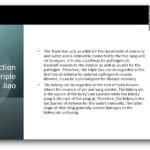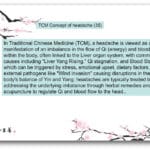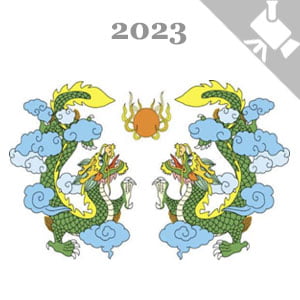
Download Professor Kong Guang Yi’s Wen Bing Treatment Strategy Part Two
Video recordings of the May 2025 webinar on Chinese Medicine Wen Bing treatment strategy, hosted by Pearls of Wisdom Chinese Medicine, presented by Dr. Greta Young Jie De (Ph.D) and Professor Kong Guang Yi (孔光一教授).
Full description
In this webinar, recorded in May 2025, Professor Kong Guang Yi will share his approach to managing difficult-to-treat diseases within the framework of Wen Bing Theory.
Professor Kong Guangyi’s approach to managing difficult-to-treat diseases within the framework of Wen Bing Theory highlights a holistic understanding of the body’s responses to disease. His methodology integrates traditional insights and modern advancements to address complex conditions effectively. Professor Kong emphasizes the significant role of the liver in the treatment of many diseases. Key aspects of his strategy include:
- Liver Regulation and Qi Dynamics: The liver plays a vital role in maintaining the smooth flow of qi. Any constraint in liver function disrupts this dynamic, leading to stagnation and potential heat generation.
- Ye Tian Shi’s Insight: “Liver constraint can lead to qi stagnation. Over time, qi stagnation transforms into heat, exhausting jin (body fluids) and impairing the ascending and descending functions of qi.” This underscores the cascading impact of liver dysfunction, moving from qi-level stagnation to deeper disturbances in the ying and xue levels.
- Clinical Implication: Professor Kong recognizes this progression and identifies liver constraint as a root cause of complex diseases, especially those involving qi stagnation transforming into pathogenic heat.
- In addition, Professor Kong features the characteristic and clinical application of diseases caused by latent pathogen.
There are many contemporary diseases for which latent pathogen theory has clinical relevance. The diseases are diverse and often difficult to treat. They include connective tissue disorders such as Systemic lupus erythematosus (SLE), systemic scleroderma, dermatomyositis and rheumatoid arthritis, and also renal diseases such as chronic and occult nephritis. Other diseases which can be treated according to latent pathogen theory are Epstein-Barr virus, Ross River fever, chronic hepatitis, allergic thrombocytopenia purpura, leukemia and other haemolytic disorders, and also chronic dysentery, dysmenorrhoea and psoriasis.
Historically, latent pathogen disorders were found in Wen Bing and miscellaneous diseases and were diagnosed on the basis of a latent asymptomatic period where the pathogen lay dormant following the initial contraction which was characterized by acute qi aspect signs and symptoms. If the pathogen involved in the initial illness was not fully expelled and resolved, it lingered in the interior, and the patient often reported that he has never felt completely well since some illness contracted years earlier.
Screenshots from the Seminars

About Professor Kong Guang Yi
Professor Kong Guang Yi of the Wen Bing Faculty Department at the Beijing University was my Wen Bing supervisor from 1994 to 1997. With his clinical experience span over for more than forty years Professor Kong continues his quest in seeking the correl… Read more »







